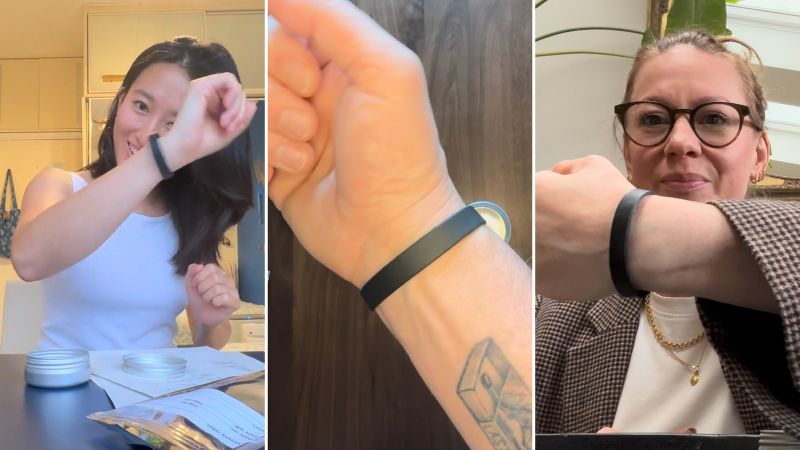The wristbands arrive from a lab in the Czech Republic encased in a small silver tin. They land on the doorsteps of three CNN reporters: one in New York City, one in London and one in Hong Kong.
Unboxed, these black silicone bands look unassuming, but their simplicity is deceptive. They can mimic human skin and absorb chemicals we are exposed to daily, many of which come from plastic products.
Plastic is woven into our lives. It’s everywhere, even places we might not consider, such as clothes, furniture and the linings of cereal boxes. The chemicals it contains slowly leach into the air we breathe, the dust we inhale, the food we eat.
Most plastic products come with no information about the chemicals they contain, leaving people clueless about what they are being exposed to.
It’s an invisible problem with potentially catastrophic health consequences, said Leonardo Trasande, a professor of pediatrics and population health at New York University’s Grossman School of Medicine, who studies the impact of chemicals on humans.
“The chemicals used in plastic are now extremely well known to contribute to disease and disability that cuts across the lifespan, from cradle to grave, from womb to tomb,” he told CNN.
Unboxing the wristbands 0:26 • Source: CNN Unboxing the wristbands 0:26
The chemical-tracking wristbands turn the invisible into visible, said Bjorn Beeler, the executive director of the International Pollutants Elimination Network, or IPEN, which provided the wristbands. The organization uses them for research experiments only, they are not commercially available.
Each band can pick up 73 chemicals associated with plastics, spanning six chemical groups, although they do not pick up PFAS, so called forever chemicals, which linger for years in the body.
The wristbands are “non-invasive, you don’t have to test blood or urine,” B
Continue Reading on CNN
This preview shows approximately 15% of the article. Read the full story on the publisher's website to support quality journalism.
